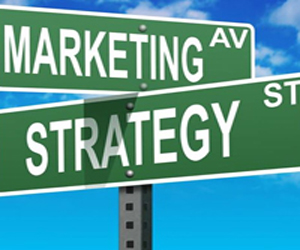


A Leap Into The Future Of Marketing

In today's fast-paced and ever-evolving digital landscape, innovative advertising approaches have become a necessity for brands seeking to break through the noise and capture the attention of their target audience. Traditional advertising methods are no longer enough to engage increasingly discerning and digitally-savvy consumers. In this article, we'll explore the importance of innovative advertising approaches and provide insights into some cutting-edge strategies shaping the future of marketing.
The Need For Innovation In Advertising
The modern consumer is bombarded with a constant stream of advertisements, and the challenge for brands is to stand out and make a lasting impression. Innovative advertising approaches have emerged as the answer to this dilemma. They go beyond traditional tactics to capture the imagination and emotions of consumers, creating a more memorable and engaging brand experience.
1. Storytelling Advertising
Storytelling has become a powerful tool in advertising, enabling brands to connect with their audience on a deeper, emotional level. Rather than merely promoting products or services, storytelling advertising focuses on crafting narratives that resonate with the audience's values, aspirations, and emotions. Successful examples include Nike's "Just Do It" campaign, which celebrates personal achievement, and Apple's iconic product launches that build a narrative around innovation.
2. Experiential Marketing
Experiential marketing immerses consumers in brand experiences. This approach brings products and services to life through interactive and memorable events. For example, Airbnb's "Night At" campaigns allow customers to spend a night in unique and exotic accommodations, offering a real-life experience of the platform's value proposition.
3. User-Generated Content
User-generated content (UGC) harnesses the power of consumers' own experiences, testimonials, and creativity to promote products or services. Brands encourage customers to share their content, whether it be reviews, images, or videos, and leverage it as authentic endorsements. UGC not only builds trust but also empowers customers to become brand advocates.
4. AI-Powered Advertising
Artificial intelligence (AI) is transforming advertising by enabling more targeted, personalized, and efficient campaigns. AI algorithms analyze vast amounts of data to predict consumer behavior and preferences, delivering highly relevant content at the right time and on the right platforms.
5. Virtual Reality (VR) And Augmented Reality (AR)
VR and AR technologies offer immersive and interactive advertising experiences. Brands like IKEA employ AR apps that allow customers to visualize furniture in their homes, making shopping more engaging and interactive.
6. Micro-Moments Advertising
Micro-moments refer to the small, intent-rich moments when consumers turn to their devices for quick answers or information. Brands that understand and respond to these moments can create highly relevant and effective advertising that meets immediate consumer needs.
7. Social Media Advertising
Social media platforms provide innovative opportunities for advertising through influencer partnerships, live streaming, and interactive content. Brands engage directly with their audience, fostering conversations and building communities around their products or services.
Innovative advertising approaches have transformed the marketing landscape, offering new and exciting ways for brands to engage with their audience. These strategies, whether through storytelling, experiential marketing, UGC, AI, VR/AR, micro-moments, or social media, prioritize creating meaningful connections with consumers. As technology continues to advance and consumer expectations evolve, staying ahead of the curve with innovative advertising approaches will be essential for brands looking to thrive in the competitive digital age. Embracing these innovative tactics can not only elevate brand visibility but also foster lasting relationships with customers, paving the way for long-term success in the world of advertising.






 Validate Your Idea: Test your business idea in the digital marketplace. Create a minimum viable product (MVP) to gauge interest and gather feedback from potential customers. This allows you to refine your concept before investing heavily.
Validate Your Idea: Test your business idea in the digital marketplace. Create a minimum viable product (MVP) to gauge interest and gather feedback from potential customers. This allows you to refine your concept before investing heavily.
Build A Strong Online Presence: Your digital identity is a cornerstone of your business. Invest in a professional website, robust social media profiles, and engaging content to showcase your expertise and build trust with your audience.
Leverage Technology: Embrace technology to streamline your business processes. Use tools and software for project management, customer relationship management (CRM), and analytics. Automation can save time and increase efficiency.
Digital Marketing: Craft a comprehensive digital marketing strategy. Utilize search engine optimization (SEO), content marketing, social media advertising, email campaigns, and pay-per-click (PPC) ads to reach your target audience and generate leads.
 2. Value Beyond Price: While discounts and low prices can be enticing, true customer satisfaction often comes from the perceived value. An irresistible offer should go beyond the monetary aspect and highlight the benefits and outcomes customers will enjoy. Demonstrating how your offer improves their lives or solves their problems can significantly enhance their satisfaction.
2. Value Beyond Price: While discounts and low prices can be enticing, true customer satisfaction often comes from the perceived value. An irresistible offer should go beyond the monetary aspect and highlight the benefits and outcomes customers will enjoy. Demonstrating how your offer improves their lives or solves their problems can significantly enhance their satisfaction.
3. Transparency And Honesty: Creating irresistible offers that lead to long-term customer satisfaction requires transparency and honesty. Clearly communicate the terms and conditions of your offer. Avoid hidden fees, misleading information, or fine print that could erode trust. Open and truthful communication builds a foundation of trust, which is essential for customer satisfaction.
4. Over-Delivering On Promises: One way to create a lasting impression and boost satisfaction is to over-deliver on your promises. If your offer includes bonuses or additional services, make sure they exceed customer expectations. Surpassing what customers anticipated enhances their perception of value.
5. Personalization And Relevance: Irresistible offers should be tailored to individual customers whenever possible. Personalization involves understanding the preferences, behavior, and purchase history of your customers. When customers receive offers that resonate with their personal interests, it not only drives satisfaction but also builds loyalty.
6. Exceptional Customer Support: A truly irresistible offer extends beyond the product or service itself. Excellent customer support can enhance satisfaction. Be readily available to address customer queries and concerns. Respond promptly to issues, and show that you value their experience.
7. Post-Purchase Engagement: The relationship with your customers doesn't end after the purchase. Engage with your customers post-purchase through follow-up emails, surveys, or feedback forms. Show that you care about their opinions and use their feedback to continually improve your offers and services.
The Impact Of Technological Advancements
 Biotechnology And Healthcare: Advances in biotechnology have led to groundbreaking discoveries in gene editing, regenerative medicine, and precision diagnostics. These technologies are poised to revolutionize healthcare, with the potential to cure genetic diseases, develop personalized treatment plans, and extend human life.
Biotechnology And Healthcare: Advances in biotechnology have led to groundbreaking discoveries in gene editing, regenerative medicine, and precision diagnostics. These technologies are poised to revolutionize healthcare, with the potential to cure genetic diseases, develop personalized treatment plans, and extend human life.
Space Exploration: The private sector has become a driving force in space exploration, with companies like SpaceX and Blue Origin pushing the boundaries of what's possible. This has the potential to reduce the cost of launching payloads into space, making it more accessible for scientific research, satellite deployment, and potentially even space tourism.
Blockchain Technology: Blockchain, the underlying technology behind cryptocurrencies like Bitcoin, is now finding applications far beyond digital currencies. It's being used for secure supply chain management, transparent voting systems, and fraud-proof legal contracts, promising to revolutionize various industries.
Advanced Robotics: Robotics is becoming increasingly sophisticated, with machines capable of more delicate and precise tasks. Robots are used in healthcare for surgery and patient care, in manufacturing for automation, and in exploration for tasks too dangerous for humans.
Cybersecurity And Data Protection: As technology advances, so do the threats to data and privacy. Cybersecurity has become a growing concern, driving the development of cutting-edge solutions to protect sensitive information from cyberattacks and data breaches.
Sustainable Agriculture: Technological advancements in agriculture, including precision farming and automated machinery, are improving crop yields while reducing environmental impact. This is essential for addressing food security and sustainability challenges.






 3. Social Proof And Authority: The psychology of persuasion tells us that people are more likely to act when they see that others have already done so. Demonstrating social proof, such as showcasing customer reviews, testimonials, or displaying trusted industry authority endorsements, can make your offer more compelling.
3. Social Proof And Authority: The psychology of persuasion tells us that people are more likely to act when they see that others have already done so. Demonstrating social proof, such as showcasing customer reviews, testimonials, or displaying trusted industry authority endorsements, can make your offer more compelling.
4. The Power Of Personalization: Tailoring your offer to individual preferences and needs is a psychological strategy that plays a pivotal role in capturing attention. Personalization makes potential customers feel seen and understood, leading to a stronger emotional connection with your offer.
5. Anchoring And Framing: The way an offer is presented can significantly impact how it's perceived. Anchoring refers to the idea that people tend to rely heavily on the first piece of information they receive when making decisions. Framing involves how the same information can be presented positively or negatively. For instance, positioning a discount as "Save $50" versus "50% off" can yield different responses.
6. Emotional Appeal: Human decision-making is heavily influenced by emotions. Creating offers that evoke positive emotions, such as joy, excitement, or satisfaction, can make them more appealing. On the other hand, offers that alleviate negative emotions, such as fear or anxiety, can also be compelling.
The Triumph Of Entrepreneurship From Home Offices
 Hewlett-Packard: Bill Hewlett and Dave Packard founded HP in 1939, starting in a small garage in Palo Alto, California. Their early work on audio oscillators and other equipment laid the foundation for one of the world's largest information technology companies.
Hewlett-Packard: Bill Hewlett and Dave Packard founded HP in 1939, starting in a small garage in Palo Alto, California. Their early work on audio oscillators and other equipment laid the foundation for one of the world's largest information technology companies.
Disney: The Walt Disney Company, now a media conglomerate, was initially conceived in a one-car garage in Los Angeles by Walt Disney and Roy O. Disney. Their early animation work eventually led to the creation of iconic characters like Mickey Mouse and the expansion of Disney's global brand.
Microsoft: Bill Gates and Paul Allen's journey began in a garage in Albuquerque, New Mexico, in 1975 when they developed the first microcomputer for personal use. This marked the birth of Microsoft, a company that has had a profound impact on the computer industry.
Harley-Davidson: In 1901, William S. Harley designed the first blueprint of a motorized bicycle engine in his small workshop in Milwaukee. This marked the beginning of Harley-Davidson, a company known worldwide for its iconic motorcycles.
Under Armour: Kevin Plank, the founder of Under Armour, started his sports apparel company from his grandmother's basement in Washington, D.C. The brand has since grown into a major player in the athletic wear industry.
Slack: This popular team collaboration platform started as a gaming company called Tiny Speck, and its founders developed a communication tool for internal use. As their new project gained attention, Slack Technologies was born, showcasing the potential for innovation even in unexpected places.
These success stories emphasize that the path to achievement is not limited by one's location. The home-based aspect of these entrepreneurial journeys illustrates the power of innovation, resilience, and relentless pursuit of one's vision. These entrepreneurs dared to dream big, embraced innovation, and had the tenacity to turn their home-based ventures into global giants.